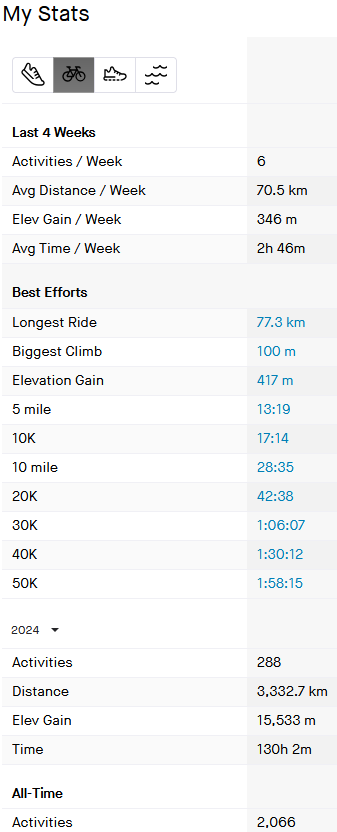- cross-posted to:
- [email protected]
- cross-posted to:
- [email protected]
cross-posted from: https://slrpnk.net/post/13929272
So, what’s the take away here ? make it so expensive to live people choose cycling and we get better cities ?
cross-posted from: https://slrpnk.net/post/13929272
So, what’s the take away here ? make it so expensive to live people choose cycling and we get better cities ?
Isn’t Australia still a country where bikes are sold as sporting goods alongside cricket bats and gym mats, rather than as practical devices one would use in everyday life?
Because they’re not practical devices one can use in everyday life here? If you can’t safely travel with it, it’s not a practical means of transport.
I disagree. I ride 10-12km to work and 10-12 km home practically daily. Because I understand people lie on the Internet all the time, here are my Strava cycling stats to show I’m telling the truth:

I cycled daily when I lived in Queensland. I cycled less often (because I’m a wuss about riding in the rain) but still regularly when I lived in Melbourne. And I cycle almost every day in Perth. The last four weeks actually really low for me - between the wet weather and having a holiday in September, my numbers are down. It would usually be 10 rides per week.
To answer @[email protected]’s question: You can often buy bikes next to the sporting equipment in some stores (cycling is a sport, after all). These are terrible though, and people who really use their bikes get them at dedicated bike stores - which are very common in Australia.
There is no reason why they shouldn’t be, other than a car-is-king mindset stemming from a rusted-on bootleg version of the American Dream imported in the Menzies era. Physics and geography work the same in Australia as in Denmark and the Netherlands, and there is enough urban density, at least in the Victorian-era cores of cities, to make cycling as transport viable.
deleted by creator